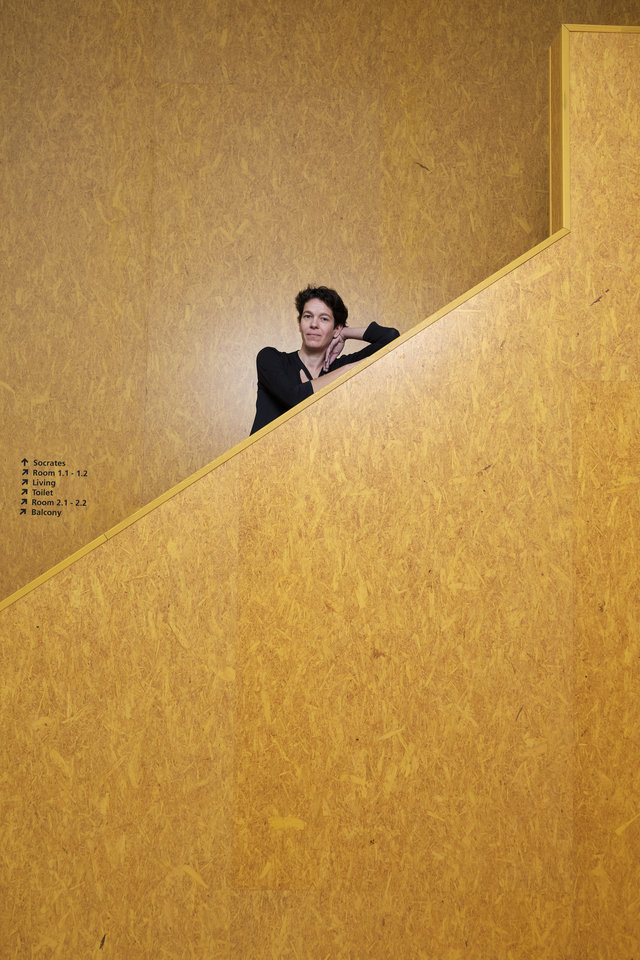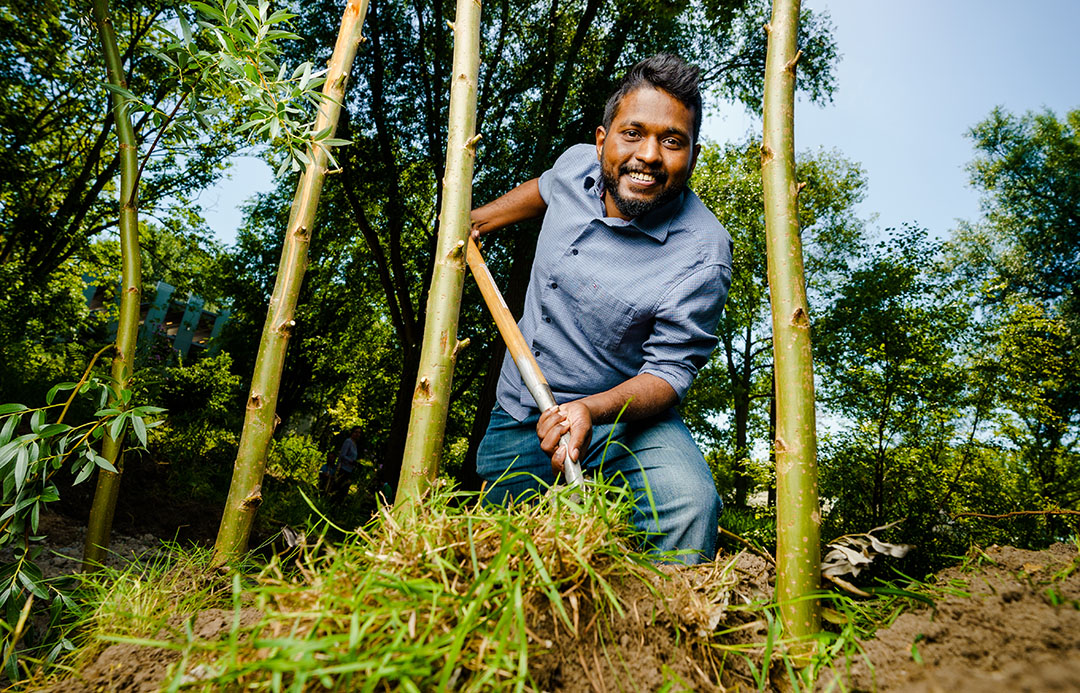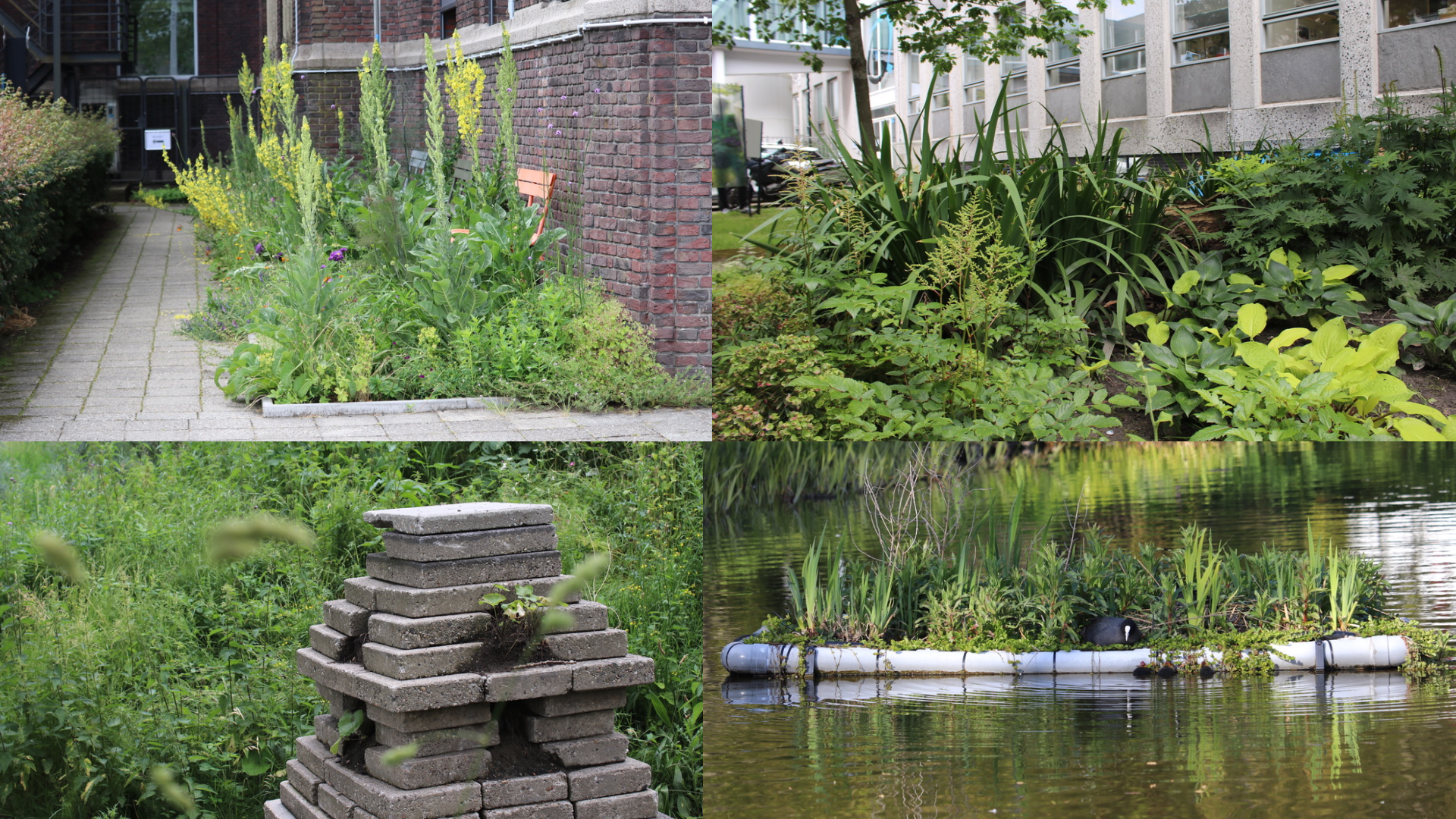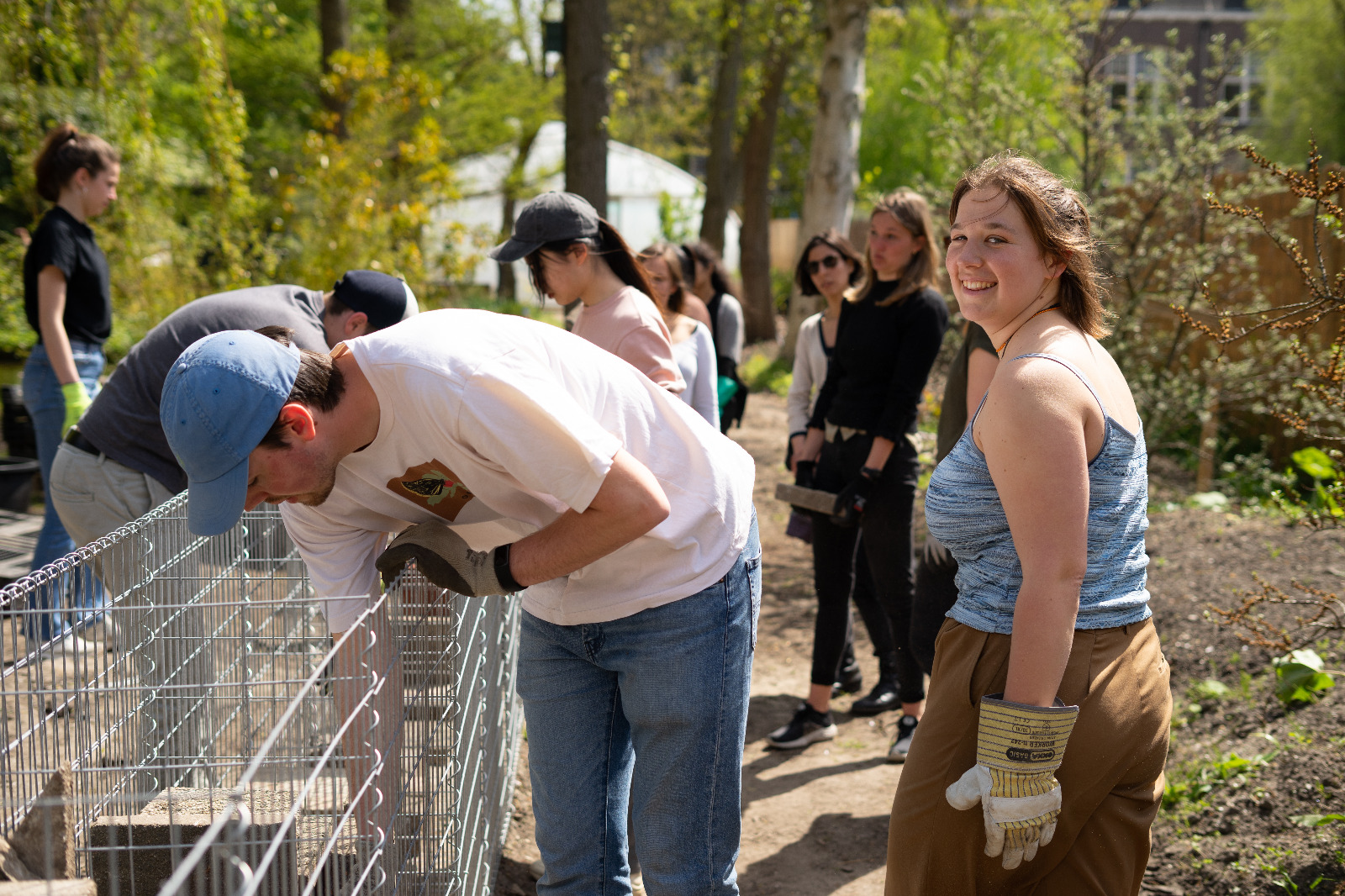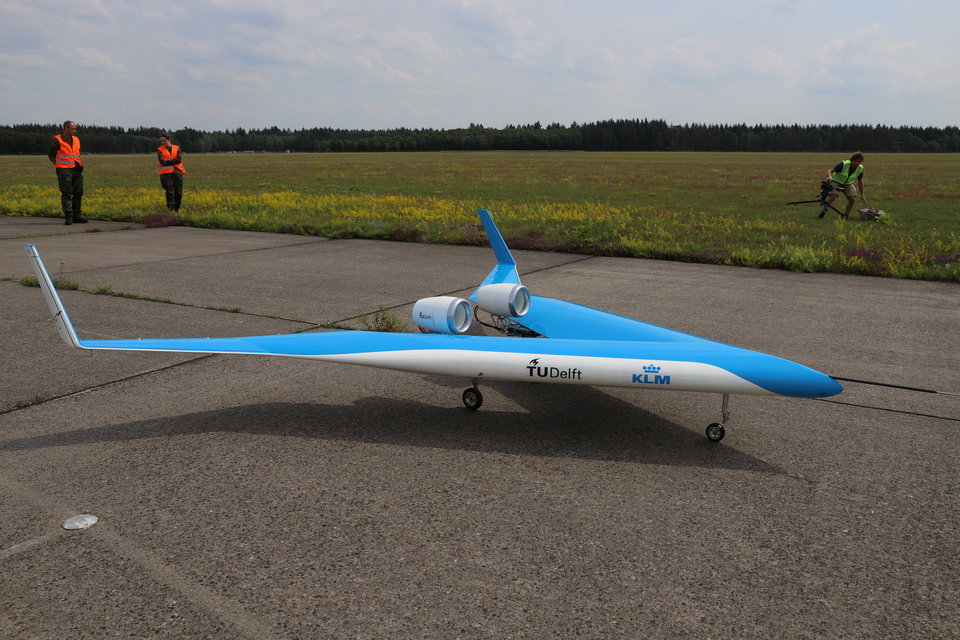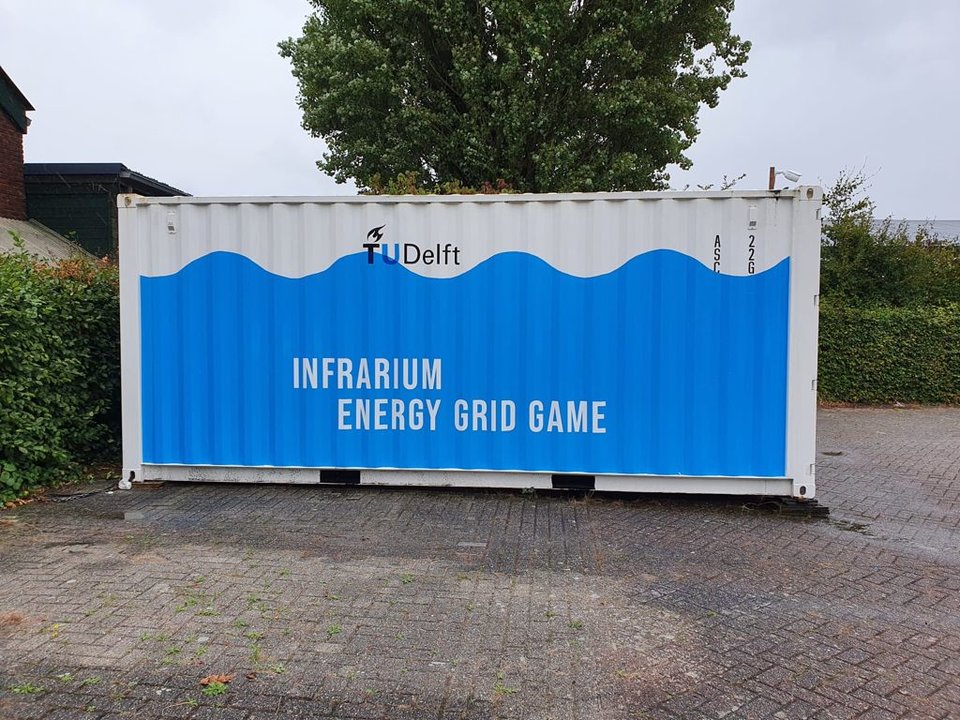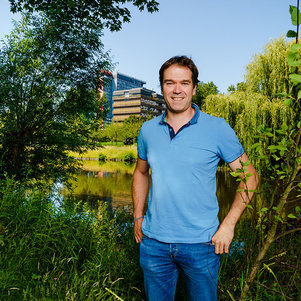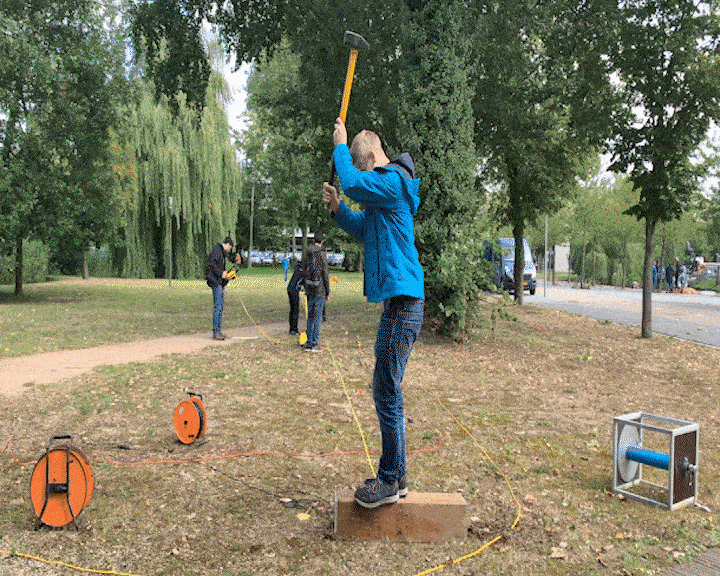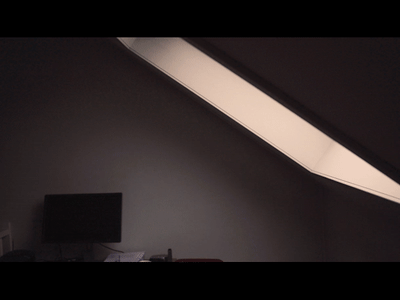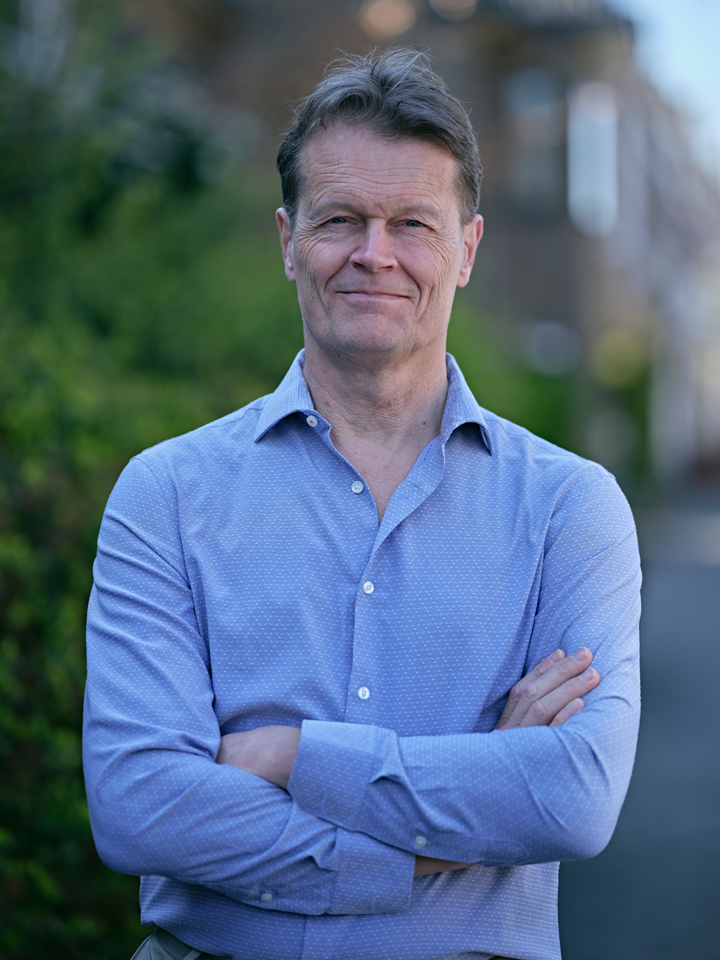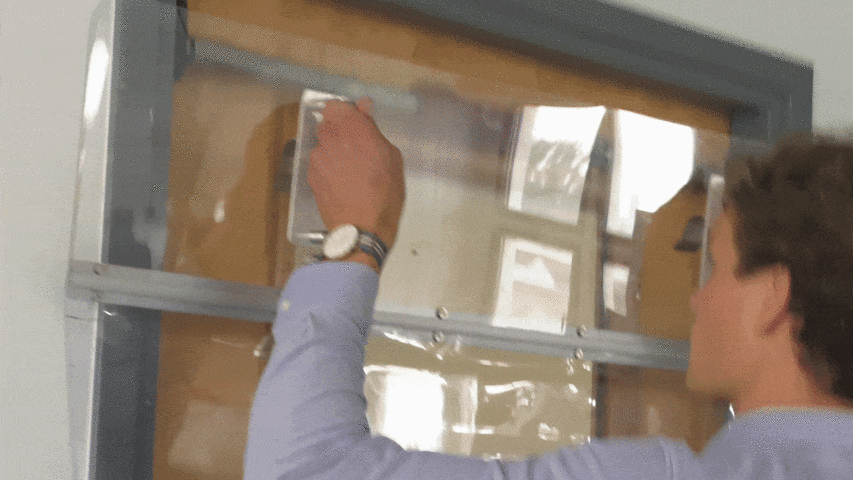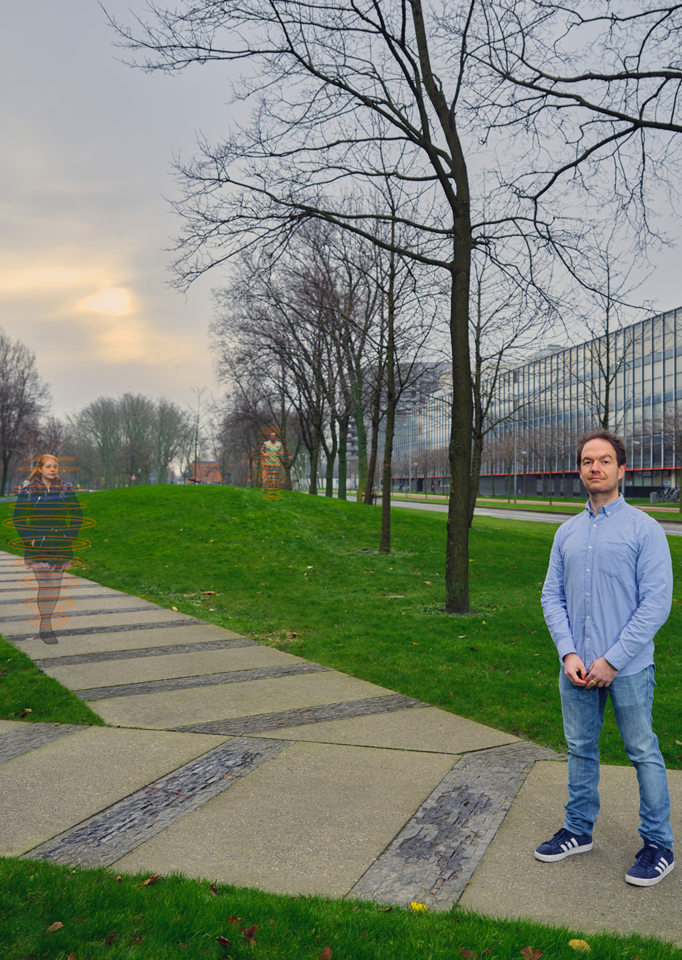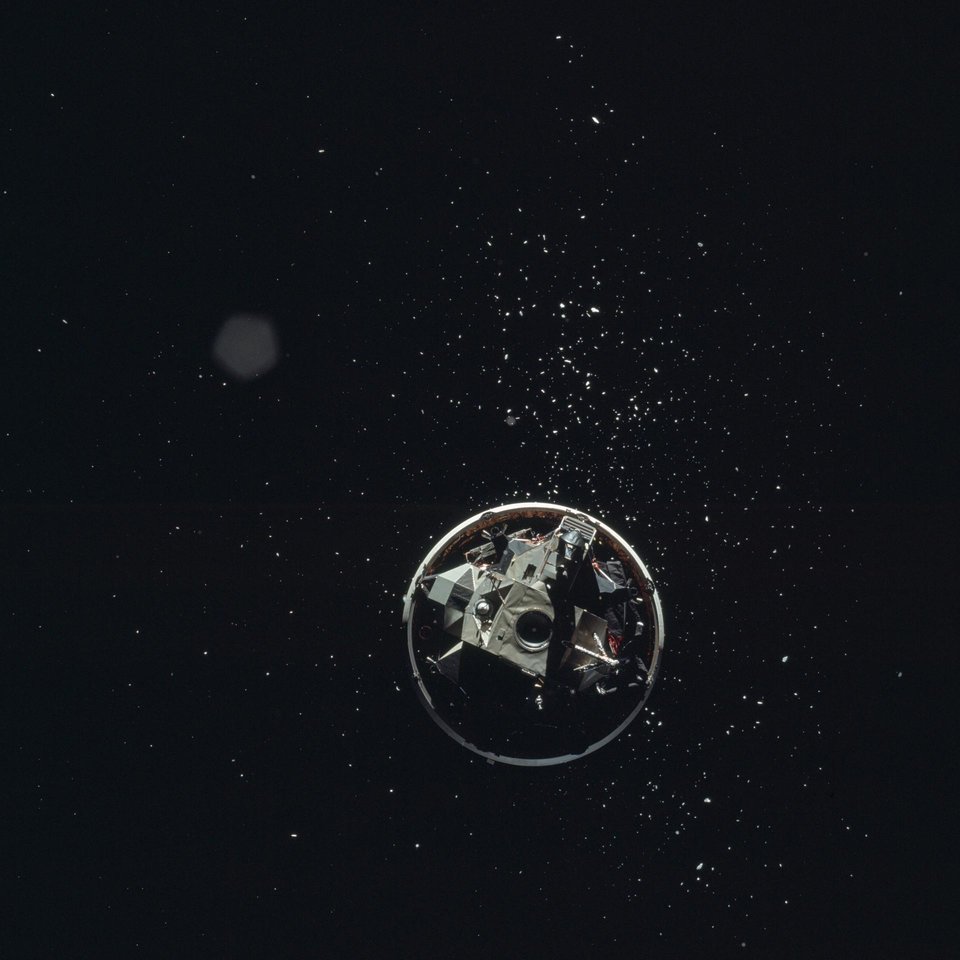"Urban Ecology Design is the bridge between ecology and spatial design. We are not only committed to biodiversity, but also to climate adaptation, health, water and energy use, and circularity," says Dr Nico Tillie, head of the Urban Ecology Design group within the Faculty of Architecture and the Built Environment. They study the ecological functioning of cities, with the aim of establishing a healthy balance between culture and nature. They also supervise a batch of master students every year. One of their main goals: to provide more space for nature on the TU campus.
Taking off
“I grew up near a garden in Maastricht that was open to the public. So, I caught the urban ecology bug at quite an early age,” Nico tells us. “I eventually found my way to TU Delft via the study Garden and Landscape Architecture (Wageningen) and working at London’s famous Kew Gardens.”
“Urban Ecology focuses on the interaction between organisms (including humans) and the non-living urban environment, such as buildings, water, the subsurface and so on. Interest in this field first emerged in the post-war period, as all kinds of new opportunities for life arose amidst the rubble. But this specialisation really started to take off in the 1970s and 1980s, in the United States and Germany.”
Our cities do not have to be biotopes for humans only, they could be a habitat for many different kind of organisms living together.
Anne Leltz, Urbanism alumni
Urban ecologist
"Unfortunately, the Netherlands is lagging a bit behind countries like Germany or England. Although every city in our country has an urban ecologist, there is as of yet no degree in Urban Ecology Design in the Netherlands; other countries have offered one for a long time. That omission is a bit strange, considering we are just about the most urbanised country in the world."
"It is therefore great that the Dutch Vogelbescherming (Birdlife Protection) has facilitated a Research Fellowship for our group. This way, they are pushing the field in the right direction. In recent years, we have seen an ever-increasing demand within the Netherlands for nature in the city and for nature-based solutions to spatial issues. And we now have the support and position to respond to this demand." (see box below)
Rosa de Wolf, MSc Urbanism
Rosa de Wolf holds a master’s degree in Urbanism from TU Delft. She graduated from the Urban Ecology Design lab, where she now works as a PhD Candidate. In addition, Rosa teaches in the Urban Ecology Design MOOC and the practical elective Landscape Architecture ON-SITE, the latter as a member of the ECOCampus team.
In her design-based research, Rosa focuses on Dutch business districts as part of the national programme ‘Workscapes of the Future’. She contributes to the ambition to transition these districts into healthy, nature-inclusive, and multifunctional sites.
"I analyse designs of business parks, created by urban and landscape designers. My aim is to contribute to a new generation of business parks by formulating principles for better design. I test these principles at four sites that are part of Workscapes of the Future."
“In looking at Dutch business districts, I noticed the large amount of sealed surface. This factor contributes to heat stress, water nuisance and lack of biodiversity. By diversifying the districts, we can build healthy habitats for both humans and non-humans and improve the environment on a systems level without sacrificing the districts’ economic purpose. Since the TU Delft campus is one of the almost 3.800 Dutch business districts, we use it as a test site to improve the quality of life and space for all species on campus.”
Biologists
Traditionally, Urban Ecology has been dominated by biologists, Nico explains. "Back then, the aim was mainly to research and support biodiversity, and of course that is still essential. But during the past decade or so, it has become increasingly clear that this research area benefits enormously from visions from other fields, such as landscape architecture or urban planning. People from those fields are designers rather than biologists. They can therefore give a more practical interpretation to the ideas from Urban Ecology."
Thus, this new generation of professionals learned to design across scales: from the urban ecosystem and habitat to solutions for specific target species. This new Urban Ecology Design aims to positively impact areas such as climate adaptation, health, water and energy consumption, and circularity. Nico: "Especially on a campus like ours, Urban Ecology Design should logically play a prominent role." (see box below)
René Hoonhout, team leader Green
René Hoonhout has managed green spaces at TU Delft for more than 34 years, the last 20 of which as team leader Green.
"When I started, you could still freely park in front of the faculties and the Mekelweg was a main road. Green management was mainly focused on orderliness. That suited me and my staff perfectly. We were trained as gardeners, so enjoyed sleek lawns and tightly trimmed hedges. But in recent years, the perception of greenery and landscaping has been changing."
"Urban greenery can contribute substantially to biodiversity, cooling the environment, capturing particulate matter and retaining water. It also makes people happier, more productive and healthier."
"This does require a different type of management. Allowing more lawns to overgrow, more flower-filled verges or fields. Planting trees and shrubs, preferably native. Leaving perennial grass strips as a winter habitat for insects, birds and small mammals. I have been able to grow into this role, and at CREFM I have always been given every opportunity to do so. And I notice the appreciation among staff, students and visitors."
"In the coming years, we will continue this approach. CREFM will also significantly invest in additional greenery to increase biodiversity, by creating logical green structures, removing unnecessary paving, and constructing green facades and roofs. We will monitor biodiversity and adjust our management according to the results.
Onward to a green and natural campus!”
ECOCampus
One of the main projects undertaken by Nico and his team is ECOCampus. "It started in 2020, when some of our students made a short film outlining their vision for the TU Delft campus. By the end of their semester, they were already realising some of their ideas in collaboration with TU Delft's greenery manager René Hoonhout and his team." Every year, a new batch of students develops more ideas (see box below). They not only create room for species and means for nature to enter the campus, but also a nicer environment for staff and students.
For Nico and his group, understanding and/or restoring natural systems is the first step in any design. In doing so, they sometimes adopt a playful approach. "For example, we asked the students to look at the campus from the perspective of a bee or a bird. So the students are allowed to dream a little, but we think it's important that those dreams eventually materialise. That is why we have been working with Campus Real Estate and Facility Management of TU Delft for years. And the Delft Botanical Garden also cooperates with on-campus projects, such as in the construction of a dry climate garden last year."
Gary Gilson, Architect
Gary Gilson: "As an architect and former Landscape Architecture student, my job is not only to learn how design improves conditions for people, but also for other living beings."
"In this rapidly urbanising world, it is necessary to respect, protect and support species and their habitats. Urban ecology promotes resilient, sustainable urban spaces in places where humans and nature co-exist."
"Properly integrated, these can reduce water and air pollution while enabling new forms of food production, transportation and living space for people."
"The graduate studio Urban Ecology Design consists of Landscape Architecture, Urban Planning and Architecture students. This ensures cross-pollination of ideas and approaches, as well as a good preparation for our professional careers. Our vision changes the identity of the campus from a thoroughly calculated and predetermined design to a scenario in which the quality of the space is determined by time and natural forces. We create 'nature cathedrals' where students and staff congregate, combined with niches for other species. The campus thus develops into an ecological springboard for the region."
The Art of Letting it G(r)o(w)
The original vision for the campus is called 'Letting G(r)o(w).' As the name suggests, the idea is to let the forces of nature take over (parts of) the campus and transform them into a niche for different species. The team (see box below) combats excessive paving and litter, reusing paving in some places to create eco-structures. They also encourage the spontaneous growth of local types of vegetation. This is ecologically valuable as these suit local animals and insects well. The whole project is cost-effective and requires little new material or specialised manpower.
It comes down to working with nature, designing across time, and making use of what is already there.
Nico Tillie
Using these principles, the various ECOCampus teams realised a whole host of projects over the past five years. Think, for example, of the façade garden and green strip at Bouwkunde, or the drought and bee gardens in the Botanical Garden. Near the old TNW building you will now find a 'red listed garden' with endangered local plant species. The pond in front of ME contains floating gardens which filter the water, there is an 'eco-cathedral' made of old paving stones near The Green Village, and there is a peat garden in the far south of the campus. All these projects serve a double purpose: they make the campus a nicer place for people and act as links in Delft's ecological web.
Janine Schmeitz and Julius Knoester work as student assistants at CREFM, and are supervised in their projects by Nico and Rosa.
"We came into contact with the research group during our respective master's courses, Architecture and Landscape Architecture. We worked together with a multidisciplinary group of students on the elective 'ECOCampus' to create a green vision for the Campus. And now our job is to build on this vision."
"Our work entails designing and detailing various projects on the campus. Those designs increase biodiversity and add climate-adaptive solutions. We transform petrified or barren areas through relatively small interventions. It is precisely these kinds of interventions that have impact on a large scale: they create connections that are useful for animals and insects, giving these species more living space on campus."
"We work intensively with the Green Management Department. It is nice to see that they have an 'open mindset'. It allows the campus to function as a testing ground with room for experiments. The best part is that the projects are actually implemented. Many assignments within our studies remain theoretical, but at ECOCampus we see the practical consequences of our hard work."
Campus of the future
So hard work is already being done on the campus, but that is only a fraction of the plans in Nico's group. "The next project is the courtyard of Architecture and the Built Environment, which we are turning into an Urban Climate Grove. Not only for its ecological value, but also to accommodate a whole range of research projects." Work is also underway on establishing native plant nurseries, a project with the Botanical Garden. "They have an extensive seed collection of local trees and shrubs, but not enough space to grow them. Well, there is plenty of space on the campus."
On a final note, the group has plenty of ideas for future projects, for example for the south side of the campus. Nico: "People are working on a lab for bio-based materials. How cool would it be to build a forest where you could grow those materials on-site?" Another idea is a food forest for growing edible species: "You might even be able to combine that with the bio-based forest." This way, we turn the campus into one big test site for Urban Ecology Design, to immediately apply the findings in our cities. Nico: "Because those are essentially getting too big, and therefore nature in the city is becoming more and more valuable; the city has to start functioning as nature."
More information
The banner and photo of Gary Gilson were taken by Marco de Swart. The photo of Janine and Julius was taken by Charlotte Delobbe. Other images were taken by and are the property of Rosa de Wolf.
For more information about the Urban Ecology Design group, please visit their new website. You can also learn about the field yourself by joining the free MOOC.

